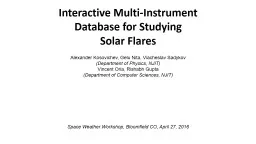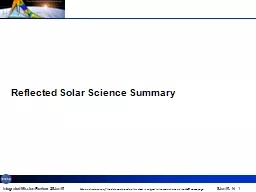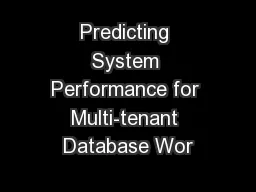PPT-Interactive Multi-Instrument Database for Studying Solar Fl
Author : danika-pritchard | Published Date : 2017-10-08
Viacheslav Sadykov Alexander Kosovichev Gelu Nita Department of Physics NJIT Rishabh Gupta Vincent Oria Department of Computer Sciences NJIT Alexander Frolov Highschool
Presentation Embed Code
Download Presentation
Download Presentation The PPT/PDF document "Interactive Multi-Instrument Database fo..." is the property of its rightful owner. Permission is granted to download and print the materials on this website for personal, non-commercial use only, and to display it on your personal computer provided you do not modify the materials and that you retain all copyright notices contained in the materials. By downloading content from our website, you accept the terms of this agreement.
Interactive Multi-Instrument Database for Studying Solar Fl: Transcript
Download Rules Of Document
"Interactive Multi-Instrument Database for Studying Solar Fl"The content belongs to its owner. You may download and print it for personal use, without modification, and keep all copyright notices. By downloading, you agree to these terms.
Related Documents














